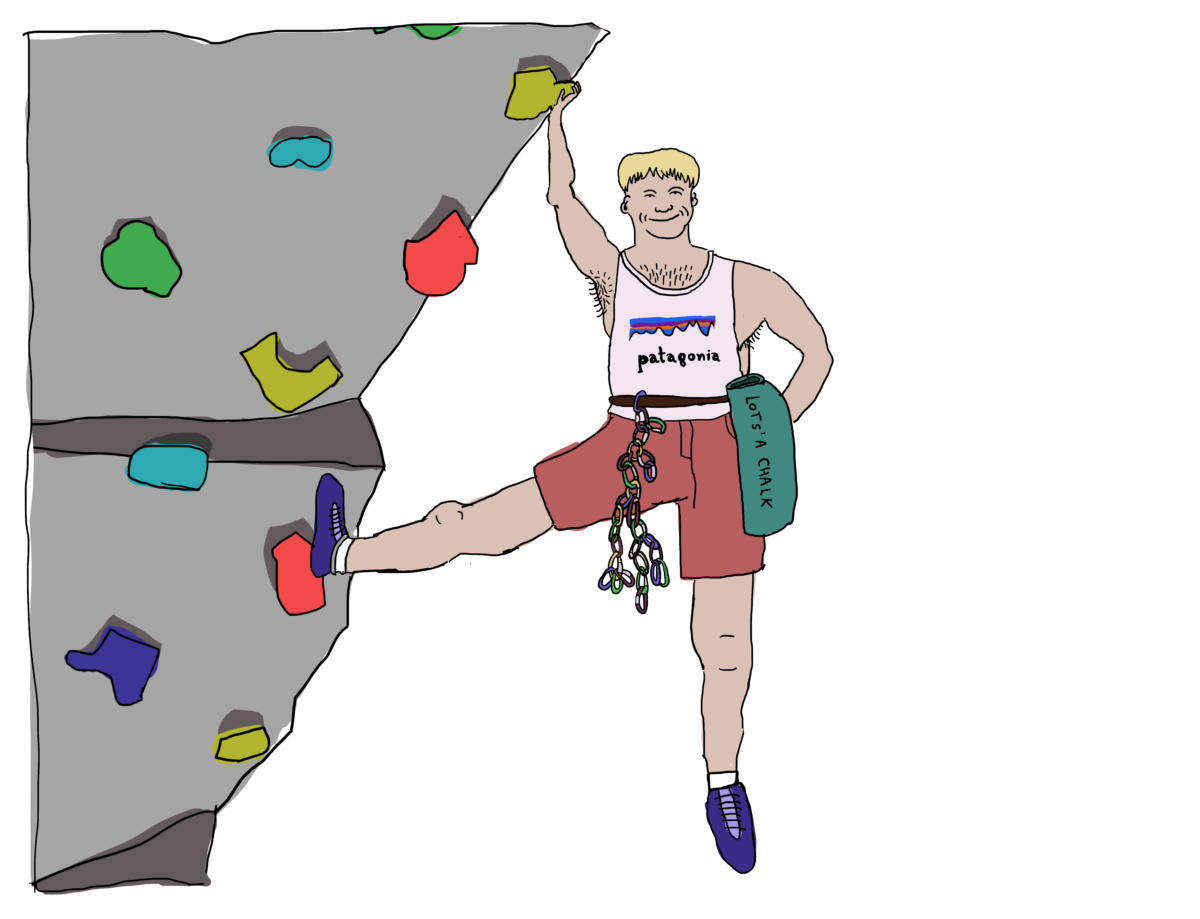Demystifying the strange culture of indoor bouldering and the notorious bouldering bro.
First impression: it smells like feet in here.
Walking into an indoor climbing gym is a bit like stepping off the spaceship onto another planet. The air is heavy with the unmistakable odour of sweaty feet, the walls are adorned with brightly coloured holds in all shapes and sizes, and—hey, what’s up with all the man buns?
Even if you’ve never experienced the climbing gym first-hand, chances are high you’ve heard about indoor bouldering. It’s inescapable: Brie Larson is doing it, the guy behind you in class can’t stop talking about it, and climbing wall photos seem to have replaced the Tinder fish photo (if you don’t know what fish photo I’m referring to, consider yourself lucky.)
For those who have managed to escape the discourse, indoor bouldering refers to free-climbing artificial rock walls on which “problems” have been set. These problems are graded on a V-scale of difficulty from V-0 to V-17, hence why you might hear someone bragging about the crazy V-6 they flashed last weekend.
As bouldering takes the spotlight, so does a very specific archetype: the bouldering bro. Who is this notorious figure, and does he bring a bad name to the climbing community?
“When I picture somebody who boulders, it’s the beanies, man buns and skinny, patchwork-tattooed arms that come to mind first, as you will never enter a bouldering gym and not see that guy,” said Simon Bowrin, a first-year Concordia student who has been climbing for roughly a year.
There’s a certain mentality that can accompany climbing, a pretentiousness that is prevalent in any scene. Like film bros and skater boys, the archetype goes beyond the “look.” There’s also that attachment to obscure jargon, a set of overlapping interests, and immense bravado. Bouldering bros are the ones squinting up at the wall with their hands coated in chalk, talking loudly about their life-changing hiking trek and their ever-growing Nalgene collection.
Those archetypes are real, although their existence doesn’t consume the scene. “Like every subculture, there’s the stereotypical people out there ruining the reputation of the sport for the 90 per cent of kind people who participate,” said Bowrin.
In truth, the vast majority of the scene is welcoming and non-judgemental. People of all demographics intermingle, and you might see someone attempting their first V-0 right beside someone jumping for a V-8. This can be intimidating, but also inspiring; bouldering is unique in that it’s an extremely easy sport to break into. Most gyms provide shoe rentals, and bouldering can be quite social as people observe each other’s technique and chat about how best to complete a problem. There are also countless physical and mental benefits of the sport itself, as it provides a full-body workout with problem-solving aspects involved.
In each Concordia Student Union agenda (distributed at the beginning of the year), there are coupons for a free try at Café Bloc, a climbing gym on St Laurent. So bring a friend and go check it out—beware of the bouldering bro, but keep in mind he doesn’t define the culture.
